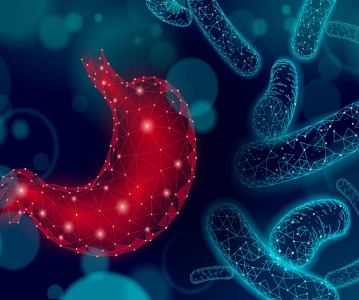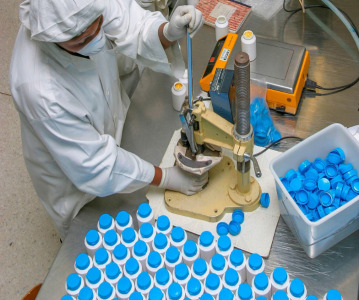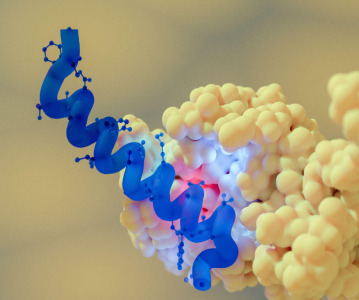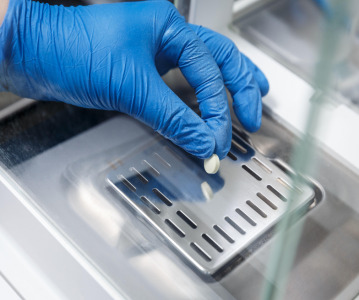Current drugs pipeline is discouraging and slowing simple manufacturing innovations

Experts predict PAT/QbD and CM adoption may take 10 years, with smaller generic players to drop out of the market if unable to innovate in time.
CPHI Worldwide – held in Frankfurt, 24-26 October and organised by UBM – announces the findings of part ii of the 5th edition of the CPHI Annual Report, which focuses on the immediate and long-term trends in pharmaceutical manufacturing and ingredients.
The second part of the report is being launched ahead of CPHI Worldwide, taking place next week (24-26 October 2017), with the full report unveiled to more than 42,000 executives during the event. Three manufacturing and ingredients experts have given their perspectives on both the near- and long-term trends – Emil Ciurczak, President at Doramaxx Consulting; Brian Carlin, the excipients iconoclast, and Girish Malhotra, President at EPCOT International.
The overall findings reveal that the trend towards the increased use of modern manufacturing processes and quality systems is occurring very slowly – with the current small molecule drugs pipeline not yet possessing the economic models and incentives to stimulate faster adoption (e.g., changing to continuous processing is expensive and may not deliver advantages compared with batch for certain drug classes). A lack of excipient innovation and multivariate analysis are also identified as a potential growing risk. Collaboration to develop new excipients will be needed, however, biologics are the most likely to support the development of new excipients, given the high product value and susceptibility to excipient impact on quality.
Girish Malhotra, President of EPCOT International, feels that the global pharma industry is now at a critical point in its history and needs to adopt new business models for the next century. “The current approach of developing new drugs for rare and orphan diseases, and for only the most affluent patient cohorts, is actively discouraging manufacturing innovation” he warns. He adds: “These newer drug are produced in smaller qualities and often feature high margins and profits – meaning the incentive to improve manufacturing processes is not there.” Malhotra presents a number of methods whereby big pharma can sustain long-term profits, open up access to emerging markets by improving manufacturing efficiencies, and therefore reduce their total costs. Most importantly, this will increase the number of patients that can benefit.
“Making drugs affordable is the best long-term way to improve the total sales in the developing countries. Because of the income differences between developed and developing countries, the differences in drug processes will remain for the foreseeable future. Economies of scale and better manufacturing technologies can make drugs more affordable and increase sales. However, to achieve all of this will require a business model review and substantial change. This is not an easy task for an industry that has not aggressively embraced change and innovation. Their focus has always been on new drug development and marketing – drug affordability is an unknown area,” commented Malhotra.
Emil Ciurczak, President at Doramaxx Consulting forecasts that it might take as long as a decade for the industry to see the full potential of its impact – but resistance is futile and, ultimately, only those that adopt QbD/PAT and continuous manufacturing (CM) will survive. However, should the regulators (EMA and FDA) harden their positions and force the industry to work towards a QbD and PAT deadline, we will see rapid purchasing of new equipment, with a race to compete like has happened with serialisation in the last few years.
“Large companies will naturally be the first movers, followed in parallel by their strategic outsourcing partners, and this will become an established practice over the next three-years. For generic companies, and particularly smaller ones, there is an existential debate pending. Do they A, close; B, merge with or acquire other small companies to have the critical mass to invest; or C, as is happening now, partner with the larger pharma companies to produce their off-patent, older (but still in-demand) brands. In ten years, the market will be made of fewer, but larger companies, and the profit generators will be the ones that understand and properly implement QbD”, commented Ciurczak.
Brian Carlin, Excipient Iconoclast, echoed Emil’s thoughts and warned that the industry needs to move to smarter control of its processes, and increased use of PAT, if excipients (amongst other factors) are not to introduce critical and often unforeseen risks into products. He argues that the industry as a whole must now embrace multivariate control over the next couple of years, as current practices are not predictive and will yield passing results until sudden failure. “Investment in PAT and data mining will involve additional costs, but this must be balanced against the increasing Cost of Poor Quality (COPQ) associated with regulatory initiatives on quality metrics and quality culture” added Carlin.
Biologics, he argues, may be the exception to the rule and is the area most likely to support the development of new excipients. Overall, Carlin believes regulators need to provide approval mechanisms for excipients, as the current indirect route of approval via incorporation in a finished product is inimical to innovation. Instead, collaboration between users and the excipient developers must be sought to reduce the commercial risk of new excipient development.
Orhan Caglayan, Brand Director Europe, UBM EMEA: “As the industry’s annual meeting point, the discussions next week at our eponymous global event will be vital in furthering development throughout the industry. From the experts’ point of view, long-term success is dependent on companies adopting modern manufacturing processes, including QbD and PAT, to reduce inefficiencies and excipient risks. We produce this report each year to help our exhibitors and the wider industry to stay ahead of trends and prepare for change, opportunities, and threats. It also helps our attendees to be better informed during discussions with partners at CPhl Worldwide.”
Related News
-
News A Day in the Life of a Pharma Event Director
The Day in the Life of series has covered most of the pharmaceutical supply chain looking through the eyes of the people working in the different fields, from R&D to manufacturing. What we haven't seen yet, is the role that non-pharma companies can... -
News On Track at CPHI Milan: The RTU Alliance on the importance of packaging innovation
As CPHI Milan gets ever closer, we sat down with some of the sponsors for this year’s conference tracks to discuss the most pressing topics in pharma, and the innovations that are set to shake up the industry. -
News CPHI Milan Speaker Spotlight: The microbiome and investing in future therapies
In the run-up to CPHI Milan, we sit down with some of the experts and thought-leaders speaking at this year’s conference. -
News On Track at CPHI Milan: Thermo Fisher Scientific Track Sponsor interview
With CPHI Milan just around the corner, we sat down with some of the sponsors for this year’s conference tracks to discuss the most pressing topics in pharma. -
News CPHI Milan Speaker Spotlight: Pharma Manufacturing and Localisation in Africa
In the run-up to CPHI Milan, we sit down with some of the experts and thought-leaders speaking at this year’s conferences. -
News Latest updates for semaglutide: reduction of renal failure risk
Recent data presented at the 2024 European Society for Cardiology (ESC) conference analysed Novo Nordisk’s Ozempic (semaglutide) and its effectiveness in the management of chronic kidney disease (CKD). This follows previous analysis on semaglutid... -
News CPHI Milan Speaker Spotlight: CDMO relations with Pharma and Start-Ups
In the run-up to CPHI Milan, we sit down with some of the experts and thought-leaders speaking at this year’s conferences. -
News What can you expect from CPHI Milan 2024?
CPHI Milan 2024 marks the 35th anniversary of CPHI. The 35th Edition of the show, taking place 8–10 October, promises to be a celebration of everything pharma, covering every sector, and featuring thought leaders and trailblazers shaking up the i...
Position your company at the heart of the global Pharma industry with a CPHI Online membership
-
Your products and solutions visible to thousands of visitors within the largest Pharma marketplace
-
Generate high-quality, engaged leads for your business, all year round
-
Promote your business as the industry’s thought-leader by hosting your reports, brochures and videos within your profile
-
Your company’s profile boosted at all participating CPHI events
-
An easy-to-use platform with a detailed dashboard showing your leads and performance







